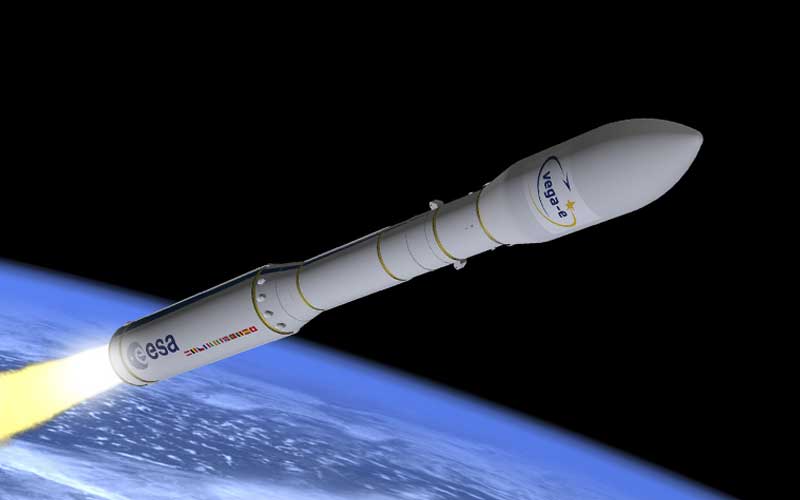
The European Space Agency has awarded Avio two contracts totaling €350 million to increase the launch cadence of Vega C and complete the development of the next-generation Vega E rocket. An ESA spokesperson informed European Spaceflight that approximately 85% of the total funding will be used for the development of Vega E.
Vega E is a planned three-stage rocket that is expected to be introduced in 2027. It will retain the first and second stages of the Vega C, replacing the Zefiro 9 third stage and the AVUM upper stage with a single liquid-fuel stage powered by Avio’s new MR10 methalox rocket engine. The rocket is designed to deliver payloads of up to three tonnes to low Earth orbit. This represents a 30% increase in payload capacity compared to its predecessor, Vega C.
In 2017, ESA awarded an initial €53 million to Avio to begin the development of Vega E. This was followed up with an additional €118.8 million in July 2021 to continue its development. On 18 December, ESA announced that it had awarded the newest tranche of funding for the rocket’s development. According to the agency, this most recent award will fully fund the project up to the on-ground qualification stage, the final step before the rocket’s inaugural flight. In addition to the development of the rocket itself, the contract also covers the adaptation of the former Ariane 5 launch pad.
Vega C returned to flight earlier this month, almost two years after it was grounded following a December 2022 failure. Avio and current Vega C commercial operators, Arianespace, will now look to ramp up the rocket’s launch cadence with four launches planned for 2025 and five for 2026.
With the 18 December announcement that it had fully funded the development of Vega E, ESA also announced that it had allocated funding to enable Avio to enhance ground operations at the Guiana Space Centre. This will enable the company to increase the number of Vega C launches per year and shorten the time between two consecutive launches. To do this, Avio will adapt the former Ariane 5 integration building. This will allow the company to assemble two Vega C rockets simultaneously: one in the adapted assembly building and one on the launch pad.
Update: On 8 January, the story was updated to include that 85% of the total funding value would be used for the development of Vega E.




